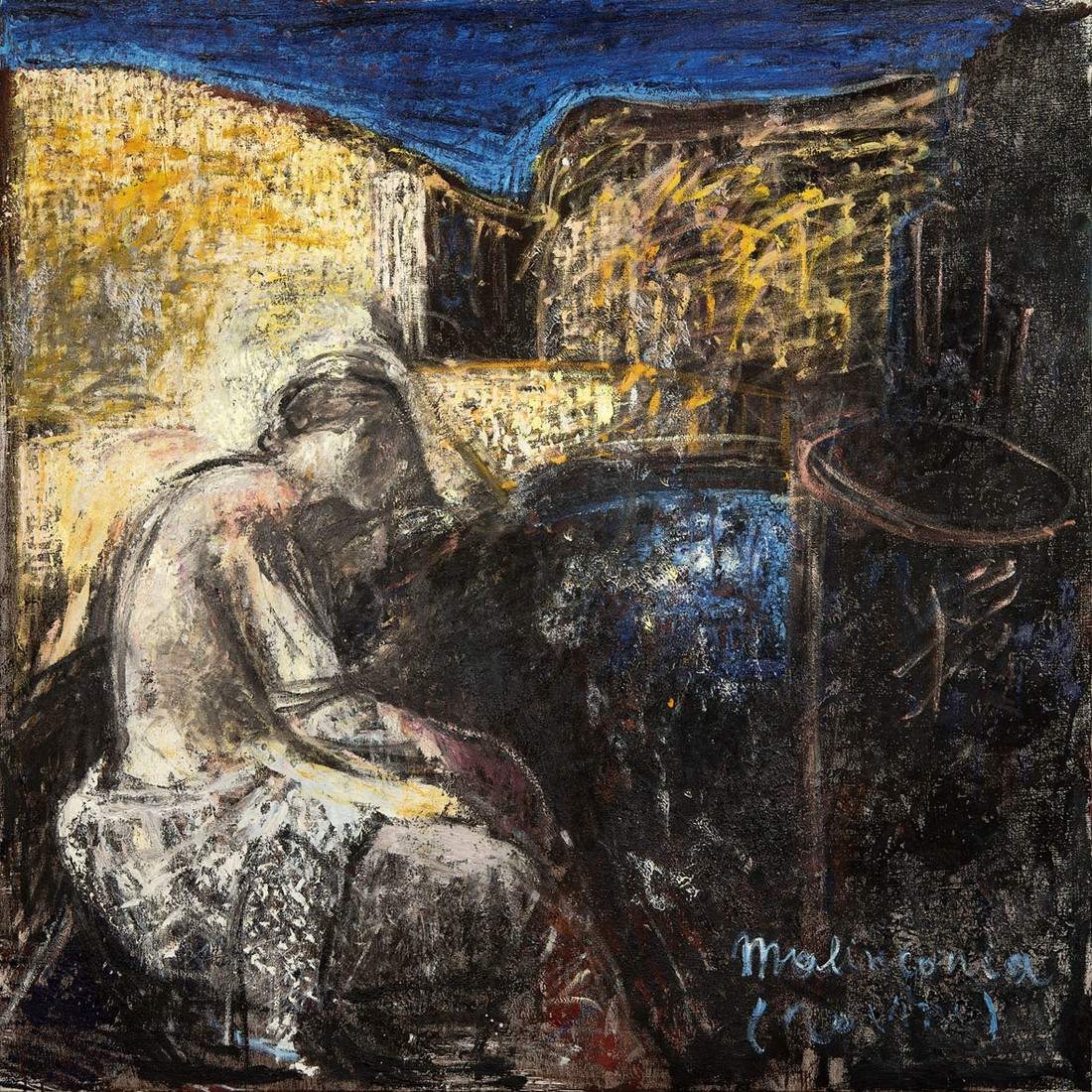Milan, at the Royal Palace an exhibition on Ruggero Savinio
Ruggero Savinio (Turin, Italy, 1934) returns to Milan with an anthological exhibition that presents the public with a number of works, some of them previously unseen or not seen for a long time, from public and private collections, but also from the deposits of the Museo del Novecento, and that retrace his artistic and biographical story in its entirety. Twenty-three years have passed since 1999, when Milan hosted a major exhibition of the artist’s work in the Sala Viscontea of the Castello Sforzesco. Now the artist, son of Alberto Savinio and Maria Morino, is back in the spotlight with the exhibition Ruggero Savinio. Works 1959-2022, promoted and produced by the Municipality of Milan - Culture, Palazzo Reale and Silvana Editoriale, and curated by Luca Pietro Nicoletti, will be staged in the rooms of theAppartamento dei Principi of Palazzo Reale from May 26 to September 4, 2022.
The exhibition, which brings together paintings, drawings and works on paper, takes off from Savinio’s formative years that took place between Rome, Paris and especially Milan: the city is the scene of one of his most intense and tormented seasons, when the artist was in search of a place where he could take root and find his own human and artistic identity.
The story told in this exhibition, entrusted to a group of scholars coordinated by Luca Pietro Nicoletti, is not that of Alberto Savinio’s son and Giorgio de Chirico’s grandson, tutelary deities never disavowed but all in all distant, echoes in the background of this exhibition: it is, instead, the autonomous tale of a man who made painting, as he himself wrote in 2008, the “inner melody” of his life. Of the three de Chirico’s, in fact, Ruggero is surely the more “painterly” one, who while loving literature and bringing its dear and great shadows into his own visual imagery, understood that the way, for him born in the 1930s, was to recover that retinal value of painting that unravels on canvas, that is all color and matter, through which to reach the heights of an Arcadian imagination, of panic adherence to nature; to ascend the peak of the sublime in the majestic silence of ancient ruins, and finally descend into the domestic quiet of mature, finally serene years.
Savinio aims, as he wrote in 2019 in The Sense of Painting, for a pictorial “absolute” devoid of possible other implications, capable of looking to the masters of the past with the freshness of a discovery declined to the present. Not an art that describes, his, but “a kind of abandonment to the vitality of painting.”
This is why it was chosen to present Savinio as if his paintings had been born for the ten rooms of the neoclassical apartment, among moldings, mirrors and velvets, to remember how his research continually reckoned with the ideal Museum of Painting and the great ancient picture galleries. The discovery of those masters, and in particular those of the second half of the nineteenth century, had taken place in the great European collections, but also thanks to the works visible in the Milanese public collections, where that sensual love of color was born that rests on the canvas with a quiver of pleasure.
It is an “other” twentieth century, the one to which he belongs, in which a Nordic wind blows, appeased by the lights of the Mediterranean, faithful to its own internal reasons and indifferent to the more boisterous and worldly fashions of the art of the second half of the twentieth century. To the rhythms of contemporary art consumption, in fact, Savinio opposed a composed and imperturbable worldview that embraces the twilight of the poets. Beneath the sensitive epidermis of a painting made up of small touches, which the artist himself in 1996 called a “luminous peripeteia,” and which leads to pleasant and idyllic places, there is in fact a veil of melancholy and restlessness: nostalgia, perhaps, for a lost “golden age.”
The exhibition at Palazzo Reale offers, in five sections, paintings, drawings and works on paper from the early 1960s to the second decade of the 2000s, highlighting the relationship between pictorial research, literary culture and autobiographical memory. Savinio’s life and imagination, in fact, are studded with physical and literary places: Milan, the scene of his youthful beginnings and his associations with gallerists and other artists; the holiday homes at Poveromo, Capalbio and Cetona, privileged places of family intimacy; Rome with its parks at sunset and its archaeological ruins; visionary and dreamlike mountain landscapes ready to host the emblematic appearance of flowers or other presences, the setting for Hölderlin on the road.
By this route, the exhibition, opened by a room of self-portraits precisely to emphasize this relationship between painting and biography, intends to bring out the artist’s private mythology-independent of the family’s artistic history whose legacy he picked up-to cast him in his own time and, above all, to emphasize the sensuality that characterizes his relationship with painting, which is reflected in numerous pages of his books, his poetic statements and texts dedicated to painter friends and past masters.
The exhibition also covers particular interest in the wake of the recent historiographical rediscovery of the 1980s and the so-called “return to painting,” which for Savinio, always faithful to the tools of that expressive language, marks a moment of renewed creative vitality.
For all information, you can visit the official website of the Royal Palace.
Pictured: Ruggero Savinio, Melancholy I (1987; oil on canvas, 150x150 cm; Vanzaghello; Private Collection)
 |
| Milan, at the Royal Palace an exhibition on Ruggero Savinio |
Warning: the translation into English of the original Italian article was created using automatic tools. We undertake to review all articles, but we do not guarantee the total absence of inaccuracies in the translation due to the program. You can find the original by clicking on the ITA button. If you find any mistake,please contact us.





























